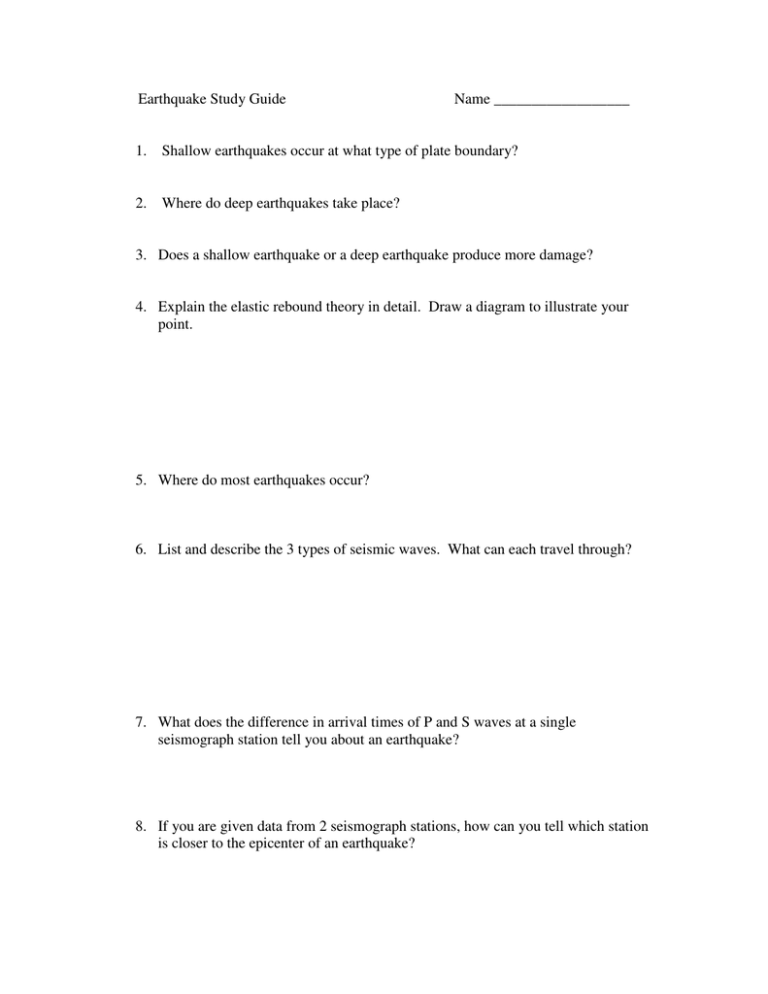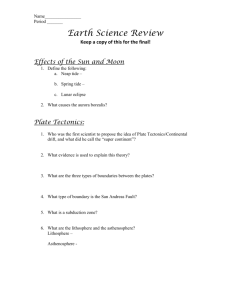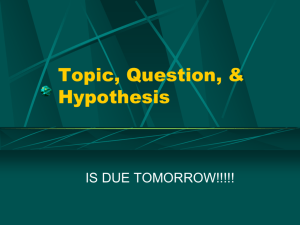Earthquake Study Guide Name __________________
advertisement

Earthquake Study Guide Name __________________ 1. Shallow earthquakes occur at what type of plate boundary? 2. Where do deep earthquakes take place? 3. Does a shallow earthquake or a deep earthquake produce more damage? 4. Explain the elastic rebound theory in detail. Draw a diagram to illustrate your point. 5. Where do most earthquakes occur? 6. List and describe the 3 types of seismic waves. What can each travel through? 7. What does the difference in arrival times of P and S waves at a single seismograph station tell you about an earthquake? 8. If you are given data from 2 seismograph stations, how can you tell which station is closer to the epicenter of an earthquake? 9. List & describe the 3 methods used to measure an earthquake we discussed. 10. How is magnitude different than intensity? 11. What is the difference between an earthquake that registers a 3 on the Richter scale and one that registers a 4? What is the difference between a 3 and a 6? 12. What are the methods scientists use to predict earthquakes? 13. Explain what Mohorovicic said about earthquake waves beneath Earth’s surface. 14. How often do seismologists think that major earthquakes like the one in the 1800’s happen along the New Madrid fault? ***Be able to interpret diagrams of seismograph data and earthquake waves inside the earth. Vocabulary Convection Currents Earthquake Epicenter Focus Elastic Rebound Theory New Madrid Fault San Andreas Fault Seismograph P wave S wave L wave Richter scale Mercalli scale Seismic moment Intensity Magnitude Seismic gap Shadow zone







